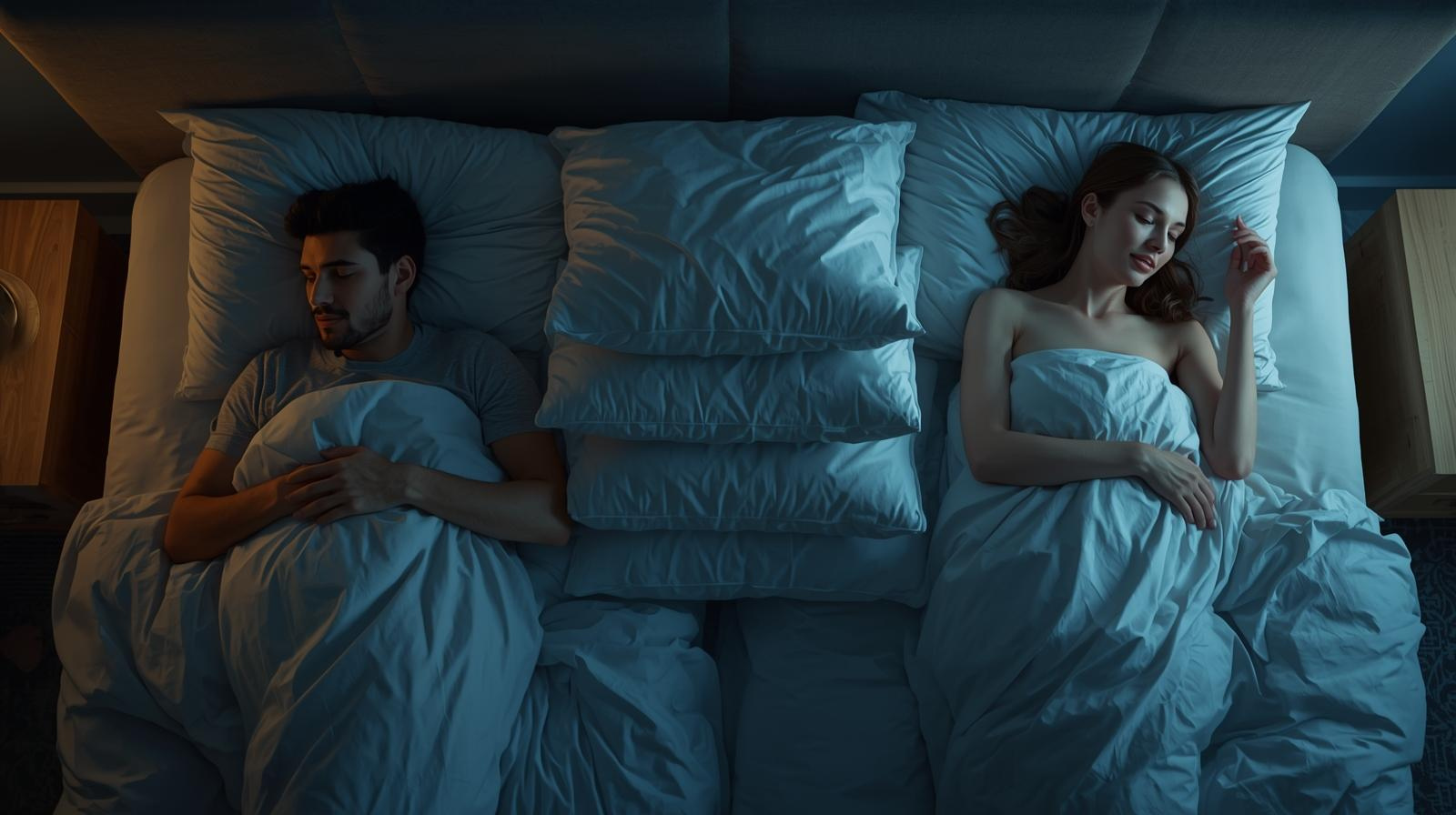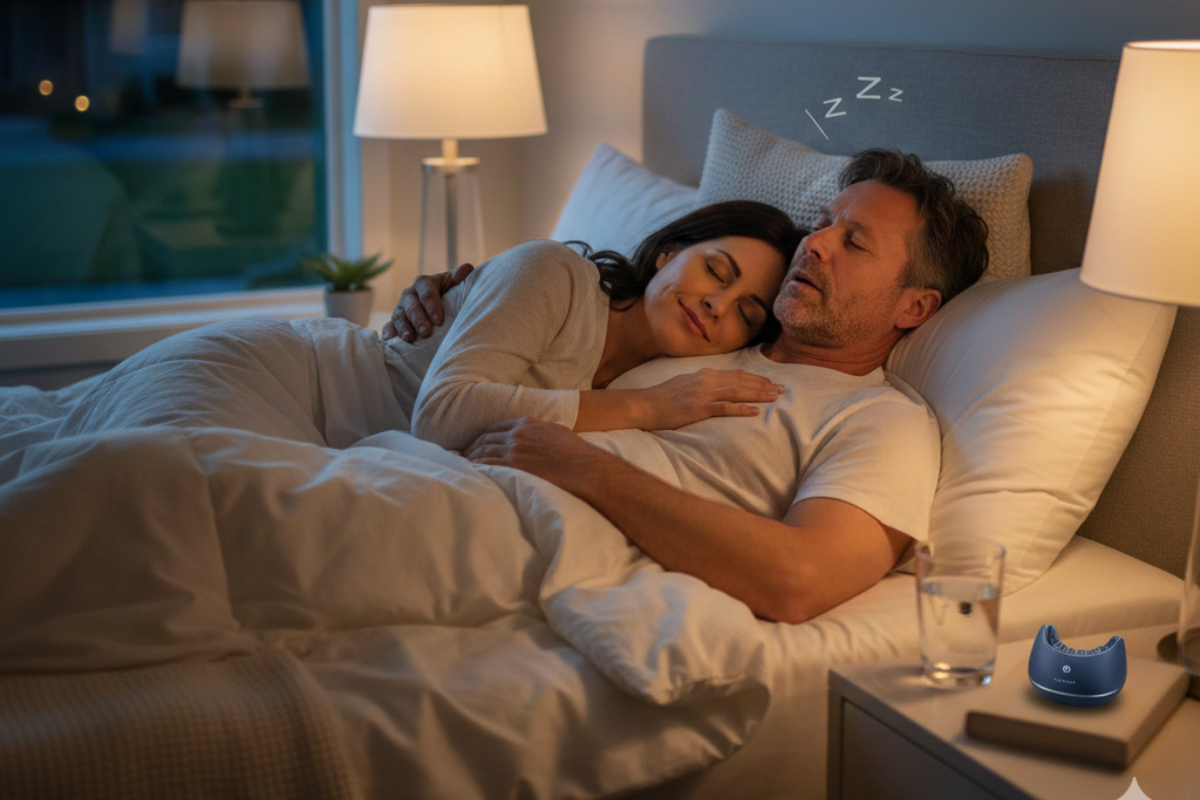Free Shipping - On Orders Over $99 (USA, Canada, UK, & AU)

What Is the Main Cause of Sleep Apnea?
September 12, 2022 4 min read
Obstructive sleep apnea (OSA), which is the most common type, affects 1 billion people globally. In the US, up to 30% of men and 17% of women meet the criteria for this sleep disorder.
Treating this disorder is important because it disrupts normal sleep architecture, leading to a greater risk of accidents, poor work performance, high blood pressure, diabetes, and even early death. The treatment, of course, depends on the causes. Once your doctor knows what’s behind your diagnosis, you can work out an effective solution.
However, there is one main cause of most cases of sleep apnea. Keep reading to learn what that is as well as what else could be behind this problem. But first, a quick primer on sleep apnea.
What Is Sleep Apnea?
Sleep apnea usually refers to OSA, which is a type of sleep disorder. Sleep disorders are health conditions that disturb normal sleep. More specifically, OSA is sleep-disordered breathing characterized by episodes of complete or partial upper airway collapse.
In OSA, upper airway collapse causes sufferers to stop breathing periodically through the night. In severe OSA, patients can stop breathing over 30 times in an hour. These episodes lead to a decrease in oxygen saturation and arousal from sleep. But those affected are usually unaware this is happening. Their bed partners, however, may complain of loud snoring. Patients also experience daytime fatigue.
If left untreated, OSA can put you at risk of many chronic health conditions. It can also lead to road accidents, poor work performance, mental health issues, and more. If you suspect that you or a loved one has sleep apnea, speak to your doctor and they can help you find a solution based on possible causes.
What Is the Number One Cause of Sleep Apnea?
The main cause of sleep apnea is upper airway collapse. This can happen for a number of reasons, but is more likely to occur in people who are:
A study published in the American Journal of Cardiology examined common characteristics and predictors in patients diagnosed with OSA and found that patients with this condition were usually older and more obese.
A possible reason why this sleep disorder occurs in the above groups is that these risk factors can lead to the narrowing of the upper airway and weakening of throat muscles.
Excess weight around the neck can reduce space in the throat. Men tend to gain more weight in the upper body and neck area, explaining why the condition seems to be more common in men. And because aging leads to gradual loss of muscle mass (3- 8% per decade after age 30), loss of upper airway dilator muscle tone further contributes to the problem.
Other Common Causes
Not all people diagnosed with sleep apnea are male, older, and overweight. There are countless other risk factors that can increase your chances of developing this common sleep disorder. According to the American Academy of Sleep Medicine, these additional risk factors include:
These risk factors can similarly lead to narrowing of the upper airway, thus putting people at risk of snoring and sleep apnea.
Treatment Options
The American Academy of Sleep Medicine has developed guidelines for the treatment of OSA. These guidelines suggest that patients should be included in decision-making. So if you end up with a sleep apnea diagnosis, your options include:
Continuous positive airway pressure (CPAP) therapy
A CPAP machine provides pneumatic opening of the upper airway. It is highly effective and recommended as a first-line treatment in severe OSA.
Behavioral treatments
These include weight loss, avoiding alcohol and sedatives before bedtime, and switching to a side-sleeping position, to name a few.
Surgery
A wide range of surgeries are available to correct anatomic abnormalities that contribute to snoring or OSA. Surgery to correct a deviated septum, for example, is one option. Others include tongue reduction, tonsillectomy, nasal polyp removal, etc.
Adjunctive therapies
Bariatric surgery, medication, and oxygen supplementation can be used alongside other OSA treatments for best results.
Oral appliance therapy
An alternative to CPAP therapy, this option keeps the upper airway open with medical devices worn inside the mouth. You can choose between custom-fitted mandibular advancement devices (MAD) or tongue-stabilizing devices like the Good Morning Snore Solution mouthpiece.
References:
Slowik JM, Sankari A, Collen JF. Obstructive Sleep Apnea. [Updated 2022 Jun 28]. In: StatPearls [Internet]. Treasure Island (FL): StatPearls Publishing; 2022 Jan-. Available from: https://www.ncbi.nlm.nih.gov/books/NBK459252/
Patil SP, Schneider H, Schwartz AR, Smith PL. Adult obstructive sleep apnea: pathophysiology and diagnosis. Chest. 2007;132(1):325-337. doi:10.1378/chest.07-0040
Drager LF, Genta PR, Pedrosa RP, et al. Characteristics and predictors of obstructive sleep apnea in patients with systemic hypertension. Am J Cardiol. 2010;105(8):1135-1139. doi:10.1016/j.amjcard.2009.12.017
Volpi E, Nazemi R, Fujita S. Muscle tissue changes with aging. Curr Opin Clin Nutr Metab Care. 2004;7(4):405-410. doi:10.1097/01.mco.0000134362.76653.b2
American Academy of Sleep Medicine. Obstructive Sleep Apnea. Published 2008. https://aasm.org/resources/factsheets/sleepapnea.pdf
Epstein LJ, Kristo D, Strollo PJ Jr, et al. Clinical guideline for the evaluation, management and long-term care of obstructive sleep apnea in adults. J Clin Sleep Med. 2009;5(3):263-276. https://aasm.org/resources/clinicalguidelines/osa_adults.pdf
Also in Blog

Healthy Sleep Goals For 2026
December 22, 2025 6 min read

💨 Are Your Nighttime Breathing Issues Robbing You of Your Health and Your Energy?
December 12, 2025 3 min read
Breathing issues during sleep, collectively known as sleep-disordered breathing, are a major public health concern.

Is Your Snoring a Sign of Something More Serious? Unpacking the Science of Sleep
December 05, 2025 3 min read
When you snore, what's actually happening?
Join our Insiders Club
Every week you will receive specials, discounts, and giveaways.
Categories
- Better Sleep
- depression
- Fitness
- funny animal
- Global Citizenship
- health
- Mental Health
- mouthpiece
- nutrition
- pillow
- Productivity
- relationships
- sleep
- sleep apnea
- sleep deprivation
- Sleep Tech
- snoring
- snoring humor
- snoring jokes
- snoring sounds
- stop snoring
- StopSnoringStartLiving
- technology
- Tongue displacement
- travel
- video
- Young Adult

